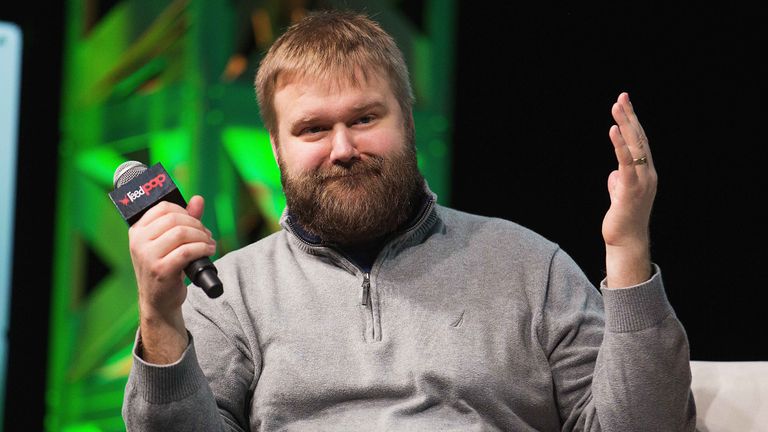How Robert Kirkman Turned A $40,000 Debt Into A Thriving Media Empire
In the early 2000s, Robert Kirkman spent many sleepless nights wondering if he’d ever achieve his comic-book dreams — or whether he’d buried himself under so much debt that he’d never crawl out from under it. Amazingly, though, he turned those maxed out credit cards and comics which refused to sell into a thriving media empire built on one of the biggest horror franchises of the modern era. This is the rags-to-riches story of the man who created The Walking Dead and Invincible!
Kirkman wanted to be a writer-artist
Like many young comic-book fanatics, Kirkman grew up imagining how awesome it would be to create his own fantastic tales. He didn’t always want to be a writer, though — in 2013 he told Rolling Stone, “My dream was to write and draw my own comics.”
He explained, “My favorite books were written and drawn by writer-artists — guys that did the whole thing themselves.” Unfortunately, when he tried to make beautiful pictures like Frank Miller or Todd McFarlane, reality came crashing in!
He wasn’t exactly a model student
He chuckled, “When I grew up and realized I was a terrible artist and was not good enough to actually do that, I was a little upset.” During his high-school years, Kirkman had been an art student — but when he had this awful realization, he went off the rails a bit.
He confessed, “My last year of high school, I didn’t do anything…I would tell my English teacher, ‘I’m going to go work on my art project.’ Then I’d leave and go hang out and eat at Long John Silver’s.”
Seeing his work in print was a dream come true
Luckily, the young Kirkman had an epiphany. He explained, “I realized that the writing part is more fun, and, you know, less time-consuming!” He began writing his own comics and collaborating with artists to bring them to life, and for three or four years, simply seeing his ideas in print was like a dream come true.
In 2012 he told Writer’s Digest, “I used to joke that the main thing I write for is the charge of getting your work back — seeing the work and being able to hold it in your hands.”
And he still feels that way to this day
Kirkman reminisced, “When I used to get my preview copies back from the printer, I would tear the box open and flip through the comic and check the printing to make sure it turned out okay. Really, just being able to hold it in your hands and feel that sense of accomplishment was the charge for doing more work.”
Amazingly, even though he’d become hugely successful by the time of this Writer’s Digest interview, he insisted, “I still get it to this day when I get my comics in the mail.”

